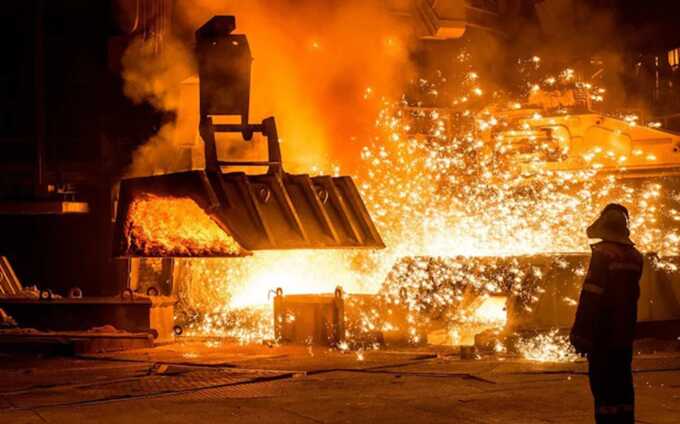Ministers consider renationalizing British Steel if rescue plan fails
Move would be last-ditch attempt to save thousands of UK jobs amid standoff with company’s Chinese owners
Ministers are considering renationalising British Steel in a last-ditch attempt to save thousands of jobs, amid a standoff between the government and the company’s Chinese owners over a £1bn investment.
Jonathan Reynolds, the business secretary, is locked in talks with British Steel and its owner, Jingye, to agree how much each party should put into a rescue plan for its main Scunthorpe site.
But with the discussions showing little sign of progress, sources say Reynolds is open to taking it over entirely, in a move that would reverse Margaret Thatcher’s privatisation of the British steel industry in 1988.
One Whitehall official said: “It is one of several options being looked at. We would have been negligent not to look at it.
“But it is the least attractive option. We would be talking about substantial sums of money to buy not very much.”
A spokesperson for the business secretary declined to rule out nationalising the company but said the government had “no plans” to do so.
They added: “We’re working across government in partnership with trade unions and businesses to secure a green steel transition that’s right for the workforce, represents a good investment for taxpayers and safeguards the future of the steel industry in Britain.”
A British Steel spokesperson said: “We are in ongoing discussions with the government about our decarbonisation plans and the future operations of our UK business. While progress continues, no final decisions have been made.”
British Steel’s plant at Scunthorpe in Lincolnshire employs about 4,000 people and is the only place left in the UK that still makes steel from iron ore, after the Indian company Tata closed its blast furnaces at Port Talbot in South Wales.
It makes steel for everything from railways to heavy machinery to warships, putting it at the centre of the government’s infrastructure and national security plans.
Keir Starmer said before the election: “For far too long, our steel industry has been left behind while our European allies forge ahead. We must turn this around. We must make Britain a world leader again.”
Since entering government, much of Labour’s plans for how to save British steelmaking have focused on protecting jobs and manufacturing capacity at British Steel.
The original British Steel was formed in 1967, when Harold Wilson’s Labour government nationalised more than a dozen private companies to create one of the biggest steel producers in the world.
It was privatised by Thatcher and broken up, but its latest incarnation has recently struggled with high costs and increased competition from abroad. The company was nationalised in 2020 for 10 months while a new buyer was found, during which time it cost the taxpayer £600m.
Jingye, the Chinese steelmaker, eventually bought the company, but has been in talks with ministers for a year over a rescue plan under which its polluting blast furnaces would be converted into electric ones.
An initial plan would have involved the company building one electric arc furnace at Scunthorpe and another at a site in Teesside. However, several people close to the talks say the option of a furnace at Teesside has now been ruled out, in what would be a major blow to Ben Houchen, the Conservative mayor of Tees Valley.
The cancellation will dent hopes of reviving industry in the area, which was traumatised by the closure of the Redcar steelworks in 2015 and the loss of 3,000 jobs.
Instead, talks are now focused on building one remaining electric furnace at Scunthorpe. Replacing the site’s two blast furnaces, which were responsible for about 0.8% of all UK carbon emissions in 2023, would help the UK meet its target to reach net zero by 2050.
Building an electric furnace at Scunthorpe is likely to cost around £1bn, according to those close to the talks, of which the company had been expected to contribute about half, as Tata did at Port Talbot.
However, officials have become increasingly concerned during those negotiations that Jingye is not willing to stump up the investment needed, leaving the government potentially on the hook for the full amount.
If Reynolds is unable to agree a deal with the Chinese company, it leaves the government with two main options: allowing the company to fall into administration in the hope of finding another buyer or taking over part or all of its operations directly.
Sources say options include a whole or partial nationalisation, which could be a temporary stopgap measure or a more long-term solution.
Nationalisation would present several complications however, especially if the government planned to keep blast furnaces running while building electric arc furnaces.
If Jingye were to walk away and the furnaces left to cool down in an uncontrolled manner, they could become unusable. A controlled shutdown could cost tens of millions of pounds.
Unions are due to meet the company on Friday to discuss a multi-union plan for how best to protect jobs and steelmaking capacity. Negotiators are racing to agree a deal before the end of January, by which point the company will have run out of the raw materials it needs to make steel and will need to order more.
Some unions indicated they would be supportive of a plan that included nationalisation.
Sharon Graham, the general secretary at Unite, said: “The UK government being an investor of first resort is an important first step. Previous governments have sold the family silver and now most of our critical infrastructure is owned by other countries or companies outside the UK.”
Charlotte Brumpton-Childs, a national officer at the GMB union, said: “Rather than forking out billions of taxpayer cash to reward private sector failure, the money should be used to renationalise our once proud steel sector.”
Emma Davis



































